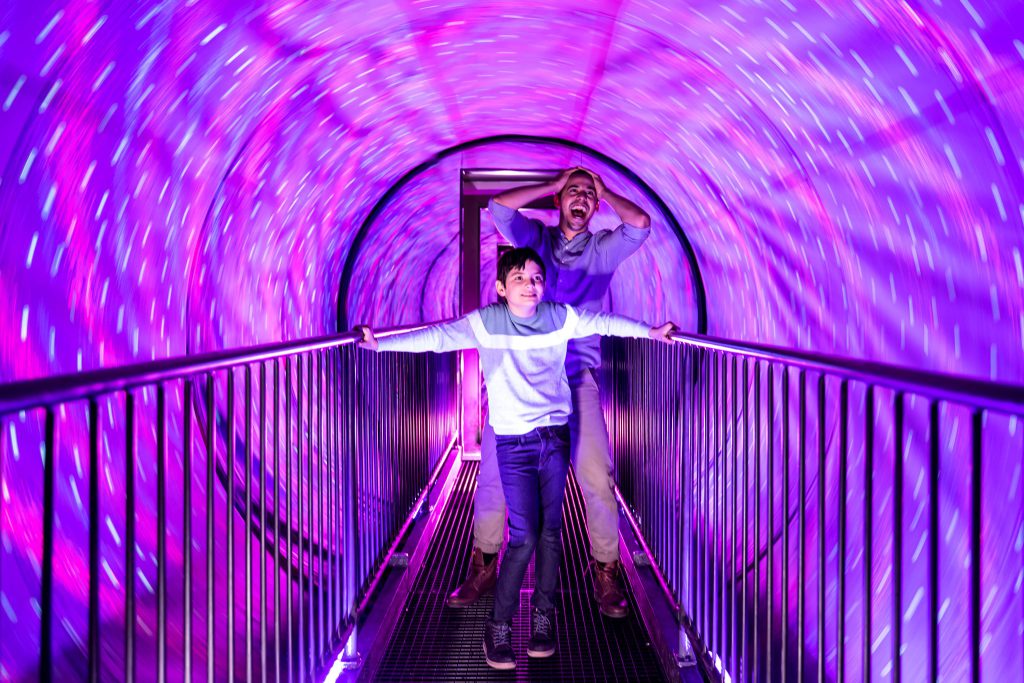
Madrid is one of the most visited cities in Spain, this is due, to a certain extent, to its exquisite artistic expression, which can be noticed in its works of art, sculptures, and so on. The best way to see Spanish art at its best is to visit its many museums.
One of the most visited museums in Madrid is the Museum of Illusionswhich belongs to a line of museums spread all over the world. Its exhibits are scattered in several rooms that show all kinds of optical illusions, and interactive scenarios where visitors can have fun and learn several very interesting scientific facts.
How to attend the Museum of Illusions in Madrid?
The Museo de Ilusiones de Madrid is located at Calle del Doctor Cortezo 8. In order to enter the place you must get a digital ticket and give it to the person in charge at the welcome desk of the place. The tickets can only be obtained digitally, by accessing the official museum website and making a reservation to enter. Its base price is 12 €, but certain individuals have discounts depending on certain factors:
- Children from 4 to 12 years old. 9 €
- University students. 9 €
- Seniors over 65 years of age. 9 €
- Unemployed persons. 9 €
- People with special needs. 9 €
- Children from 0 to 5 years old have free admission.
To get a discount for their age, the buyer needs to show a document proving their age, just as university students must show their university card for a discount. In addition, there is a family pass that costs 36 € and allows a pass for a whole group including: 2 children between 4 and 12 years old, and two adults representing them.
Opening hours of the Museum of Illusions in Madrid
The ticket allows its owner to move around the Museum of Illusions and its exhibits for a full hour. Passes can only be used on opening days during the established opening hours:
- Wednesday: 12:00 - 22:00
- Thursday: 12:00 - 22:00
- Friday: 11:00 - 22:00
- Saturday: 09:30 - 22:00
- Sunday: 09:30 - 22:00
The museum has no age limit, and anyone can enter on their own, although for obvious reasons younger children need to be accompanied by an adult. The facilities are adapted so that disabled people can move around with their wheelchairs, except for certain areas that lack ramps. The employees are available to solve any problems that may arise, as well as to give advice on how to move around the museum.
What are the exhibits of the Museum of Illusions in Madrid?
The Museum of Illusions is a space that has 600 m², where there are several areas of interest, with legends written in Spanish and English to achieve a much wider public reception. Through the rooms people can learn more about their own sense of perception, the human brain and scientific data of great interest. Below, we will give an overview of all the rooms and works of the place:
- Kaleidoscope: It is a room full of small mirrors with beautiful psychedelic reflections that change color at the slightest movement.
- Ambiguous cylinder: It is a box-shaped machine where an object is placed behind a mirror. Depending on the angle from which the object is viewed, it can be perceived as a cylinder or a square, posing a real challenge to the perception and logical understanding of the individual with each change of shape that occurs.
- Ames Room: It is a room painted in yellow and black squares that manages to distort the reality of the visitors, making them see how they change size as they move around the place.
- Infinity room: It is another room that stores hundreds of mirrors, which creates an optical illusion that makes it seem as if the visitor is replicated infinitely.
- Inclined room: A space that manages to create angles that seem impossible, water that flows upwards, balls that roll upwards are some of the things that visitors will see, causing them to not even know if the ground they touch is straight or inclined.
- Inverted room: A room that shows what appears to be an ordinary living room, with the added bonus of being at a 90° angle. Undoubtedly, a new perspective that visitors can have a lot of fun with.
- Rotating discs: A work hung on the wall showing huge two-dimensional discs, with a black and white outline, which when rotated produce a hypnotic effect.
- Rubin's vase: It is an artifact, created in 1916, which shows a set of two-dimensional forms, commonly identified as human faces, hidden in the vase's own vision.
- The vortex tunnel: It is a tunnel that has a completely flat and straight surface, but has a rotating design that creates an optical illusion that will make visitors feel like they are spinning even though they are not moving.
- Royal Mirror: It is a unique mirror that shows the person it reflects exactly as he/she is, without inverting the right and left side as it happens with common mirrors.
- Stereogram: It is a painting that shows an image inside another image. To see the objects and figures that it hides, it is necessary to look out of focus and move the head slightly, otherwise the visitor will fall into the optical illusion and will only see "through the image".
- Holograms: A large collection of holographic images of all kinds are on display throughout the museum: people who change their expression, people who jump from one frame to another, and images that disappear and appear in another place are some of what can be found here.
- Photographic illusions: These are images found throughout the museum, which show photographic tricks that create in the viewer the perception of things that, in reality, are not what they seem.
- Optical illusions: Sculptures and images, located in every corner of the museum, challenge the mind and senses of the viewer to generate a perception of something that is not.
- Head on a platter: It is a table that plays with the perception of people to hide the body of a person, and generate the illusion that his head is cut off and served on a tray. A classic that never gets old.
- The illusion of hollow faces: They are images that play with the public's idea that a face is always convex, to create an illusion where the faces in the paintings seem to follow the viewers' gaze.
- The illusion of the Beuchet chair: It is a space that plays with the laws of perception to create a "chair", with objects that are in the same room, and that give a small aspect to the person who sits on it. It is the favorite place for museum visitors to take a photo as a souvenir.
- The table of clones: It is a circular cutting table that has two large mirrors, at an angle of 60°, placed on both of them that make it look like a circular table and when a person sits down he gets several reflections of himself, making it look as if he had multiplied himself.
- Palo con maña: It is a moving sculpture that shows a stick that crosses a piece of wood that has a curved hole. It gives the viewer the sensation that, because of its shape, the stick will not cross the wood, but it achieves this through a very detailed geographical calculation, which will make the viewer question his cunning and intellect.
- Infinite tunnel: It is a corridor that uses the space to show the visitor what an eternal tunnel would look like, with no end, and walk through it, giving him the unique opportunity to return.
Reservations of the Museum of Illusions in Madrid
The Museo de las Ilusiones de Madrid uses the email [email protected] so that anyone can contact them to make a reservation, or clarify a question they have. Their estimated response time is between 24 to 48 hours.
The museum reservation not only allows a group to explore the place without the intervention of other visitors, but also includes a guide who will give an introduction to the world of Optical Illusions, and answer any questions they may have. Of course, in order to make such a reservation, certain requirements must be met:
- Reservations are made from Monday to Friday, on days that are not holidays or vacations, with the exception of the summer, when reservations can also be made.
- Reservations must be made 14 days prior to the scheduled date.
- You must make the 50% payment in advance, and give the other 50% in a final payment at the museum's welcome desk at the beginning of the visit. Refunds are not accepted, nor is the division of the sum of these payments.
- Groups for these reservations must have a minimum of 11 members.
Apart from booking the Museum of Illusions for sightseeing tours, it can also be booked for important events, such as business meetings or children's parties, fulfilling the same requirements as explained above.
At these meetings, various souvenirs provided by the Museum can be consumed, as well as other activities planned by the staff can be enjoyed. So, it is necessary for clients to contact those in charge to make sure that everything is going well, or if they want to make any changes.
Current restrictions of the Museo de las Ilusiones in Madrid
Due to the sanitary measures that are being taken at a global level, because of Covid-19, the Museums of Illusions does not allow any type of reservations in its facilities, to avoid contagion among the public.
In addition, several of the Museum's educational activities and rooms have been temporarily suspended until the health crisis has been resolved. So, always check the information that appears in the Museum of Illusions official website in Madrid to find out if there have been any changes in their security.
Passion for Madrid captured in stories that masterfully intertwine tradition and modernity.

